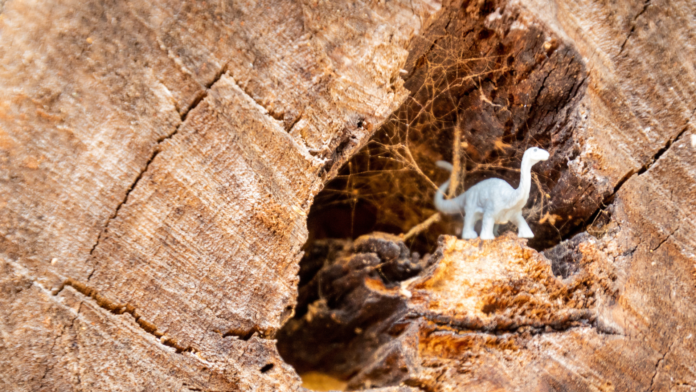Sixty-six million years ago, a meteorite wiped out three-quarters of Earth’s plant and animal species, including the dinosaurs. When the 10-15 km wide meteorite struck ground in present-day Yucatán Peninsula, Mexico, the impact disrupted global ecosystems and devastated plant and animal life.
Exactly how the impact caused the Cretaceous–Paleogene extinction is unclear. Theories range from large-scale volcanic eruptions to a prolonged impact winter. Understanding more about the role of climatic changes during this time could be critical as modern climate crises and mass extinctions continue.
To learn more, scientists at McGill analyzed the microscopic remains of plants from this period. Focusing on exposed river sediment in southern Saskatchewan, the team studied plant remnants found in a thin band of rock that marks the end of the Cretaceous and start of the Paleogene period, the Cretaceous–Paleogene (K–Pg) boundary. Comparing carbon and hydrogen signatures in samples from pre- and post-impact provided clues about how plants, carbon and water cycles were affected.
Their results suggest a notable long-term shift in plant life. Pre-impact, aquatic plants dominated. Post-impact, the researchers found increased land-based plant life, including birch and elm trees. They speculate that this was due to the extinction of large plant-eating dinosaurs enabling terrestrial vegetation and forests to thrive.
The team also found that changes in rainfall patterns, inferred from the balance of carbon and hydrogen composition in plant matter, were surprisingly minor and short-lived. In fact, data suggest that water and carbon cycles recovered within 5,000 to 10,000 years, which is a blink of an eye in the time scales of paleontology.
“This could be important as we look to the future of global warming, where many scientists have predicted that changes in precipitation could have big impacts on humans and ecosystems,” says Peter Douglas from McGill’s Department of Earth and Planetary Sciences and senior author on the paper.
“At other times of major climate change in Earth’s history we typically do see evidence for such changes. The absence of such a signal during the most recent mass extinction event is intriguing.”
Douglas adds, “Surprisingly, scientists know more about what happened in the oceans at the end-Cretaceous extinction than on land. By clarifying the environmental changes occurring during this period, we narrowed down the factors that are likely to have caused the disappearance of dinosaurs. The research also provides an important analogue for environmental changes humans are causing to the planet, and the potential for future mass extinction.”








































